I’m stealing the title from one of my favorite movies to try to get everyone caught up with what we’ve been doing.
If you’ve not seen “What We Did on Our Summer Holiday,” you must. Go ahead and borrow, rent, stream or whatever it is you do for movies. This post will still be here when you get back.
Okay! Now that we’ve all seen the movie, I’ll warn you this post’s entertainment value pales in comparison, partly because I already wrote most of it once before, only to have WordPress swallow it up and refuse to regurgitate it on command.
I apologize. I’m not as amusing as Billy Connolly, Rosamund Pike, and David Tennant, not to mention the scene-stealing children actors in the movie. I’m not sure anyone could be.
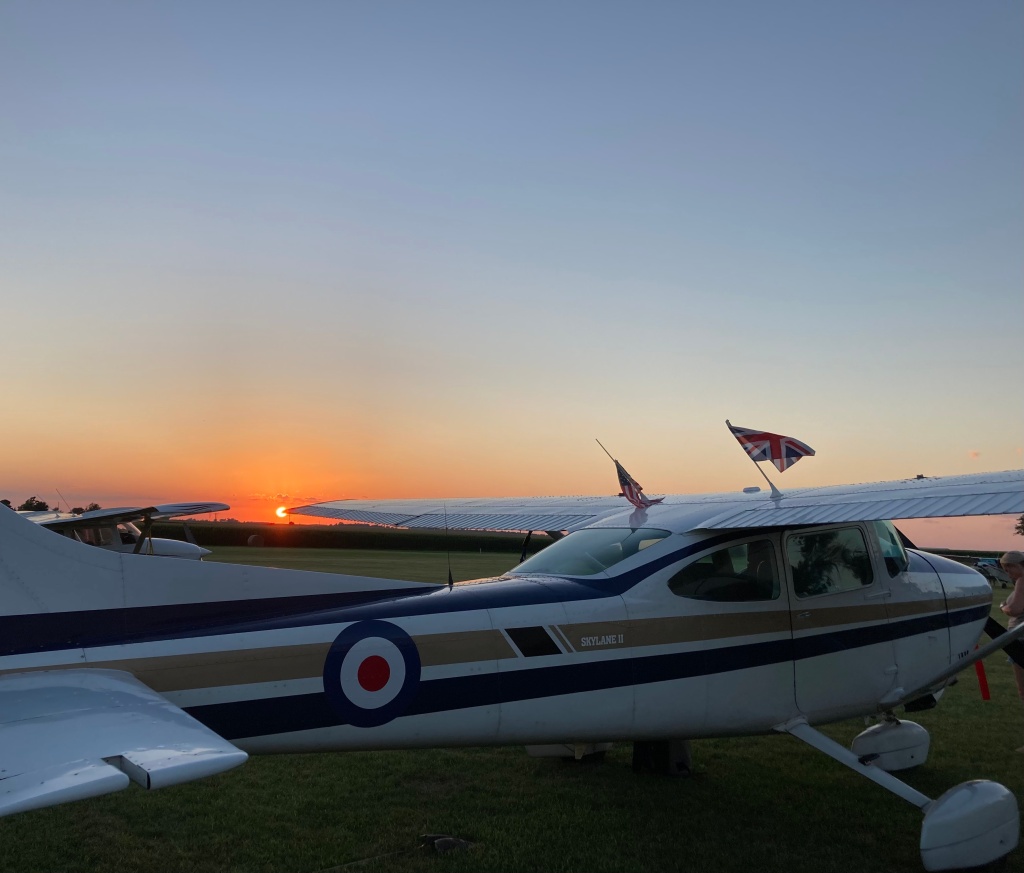
Anyway, first we went to Oshkosh. Well, strictly speaking, first we went to Illinois to our friends’ grass strip, and then we fly to Oshkosh.
Actually, if I’m being completely accurate, first we drove to Detroit to pick up The Engineer’s Little Sister, who came in from England to go to Oshkosh with us, then we flew to Illinois and went to Oshkosh from there.
Whatever.
The point is, we’ve done a lot of traveling in the last month.
Oshkosh was as Oshkosh always is, a whirlwind of catching up with friends from all over, sleeping in a tent under the wing of a plane, cooking outside, and enjoying sights like this at the end of our group’s rows of planes.


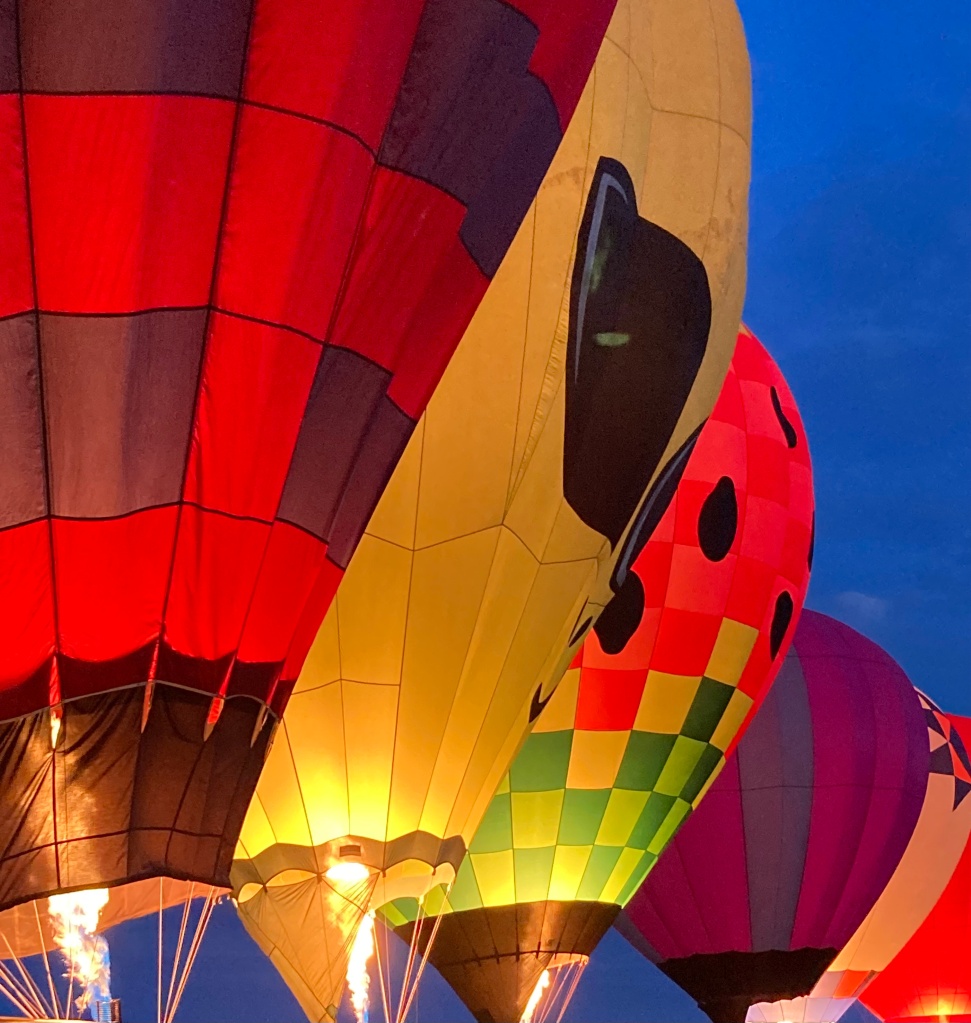

The rides are quite short, but seeing Lake Winnebago from one of these historic planes is an experience to remember.
I won’t go into much detail about Oshkosh, having written about it many times in the past, both on this blog and my old one.
We returned home — happy to once again sleep between sheets and enjoy the novelty of indoor plumbing. A few days and several immense loads of laundry later, we were on our way back to Detroit to bid farewell to Little Sister.
Then, it was time to check the hives we were unable to check before Oshkosh because of the weather.
They all seemed fine — with larvae, brood, and eggs — and we were able to steal a few more frames of honey.
We even saw one or two of the queens. Bet you can find one of them below even though I didn’t circle her.

We did notice something weird.


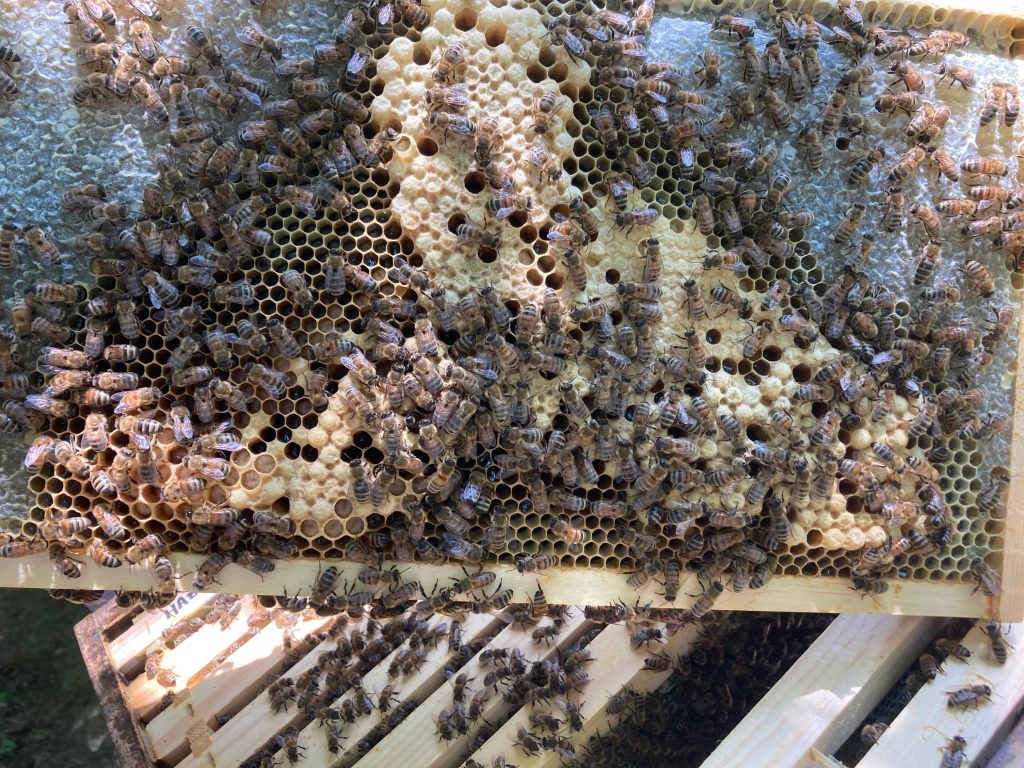
In all three hives there was more drone brood than we would have expected this time of year.
For comparison, below are photos of worker brood.
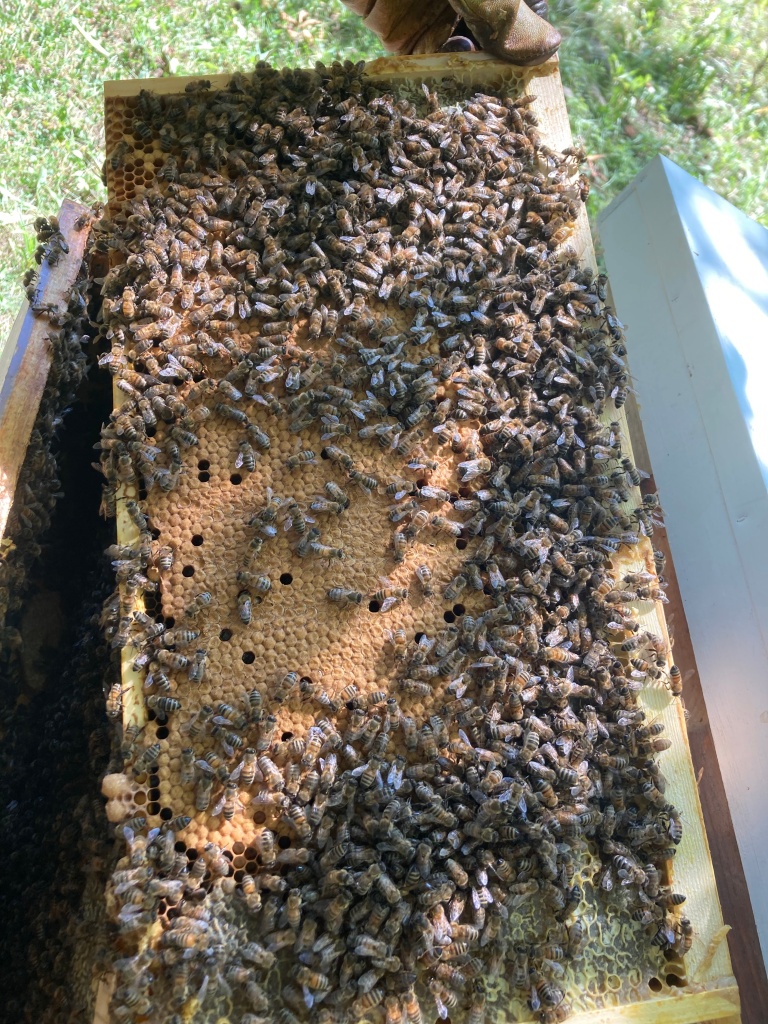

When we first saw the drone brood, we thought there might be a laying worker in that hive, but there was plenty of regular brood and larvae, so that seemed unlikely.
We opened the other two hives, and were surprised to discover a similar situation in both.
Complicating things is the fact that queens slow their laying toward the end of summer, resulting in a higher Varroa load. And those nasty mites love drone brood because it’s most similar to their own development cycle, so having a large number of drone brood right now didn’t seem a good thing.
In the end, we decided to get rid of the capped drone brood by scraping those cells off the frames, a disgusting job I won’t describe for you.
Was that the right decision? I couldn’t tell you. I only know we didn’t want to take a chance on our hives becoming Varroa bombs.
We also moved three of the hives, converting the pink nuc box hive into an eight-frame in the process. Now, they’re all on hive stands, instead of being spread out on the picnic table.
Some beekeepers say if you move hives, it needs to be two inches at a time, or over two miles all at once. This is because when bees become foragers, they orient to the hive’s location.
If you move the hive more than two miles, they have no choice but to re-orient. If you move it two inches, it’s still close enough to the old spot that they can find it.
Other beekeepers say you can move it however you like as long as you force them to re-orient by putting something in front of the hive (like a big leafy branch).
The first few times we moved a hive, we did this.
Then, we forgot.
The bees milled around where the hive used to be for a couple hours, but then dispersed, and all was well again in bee world.
I still think the branch is a good idea, especially if you (or anyone else) need to be near where the hive was previously located, because confused bees are not happy bees.
Sorry for the anthropomorphizing, but can anyone really say unequivocally bees don’t get unhappy? I mean, no one really knows for sure, do they?
Anyway, all the hives are on hive stands now, which is the first step in preparing them for winter.
We also ended up visiting our friend MJ to have a look at her two hives because she’d seen open queen cells but no larvae or eggs the last time she’d checked one of them.
By the time we saw them, the new queen had started laying, and everything was fine.
Still, it was a good excuse for a visit, and I was able to take a photo of this glorious sunflower from her yard.

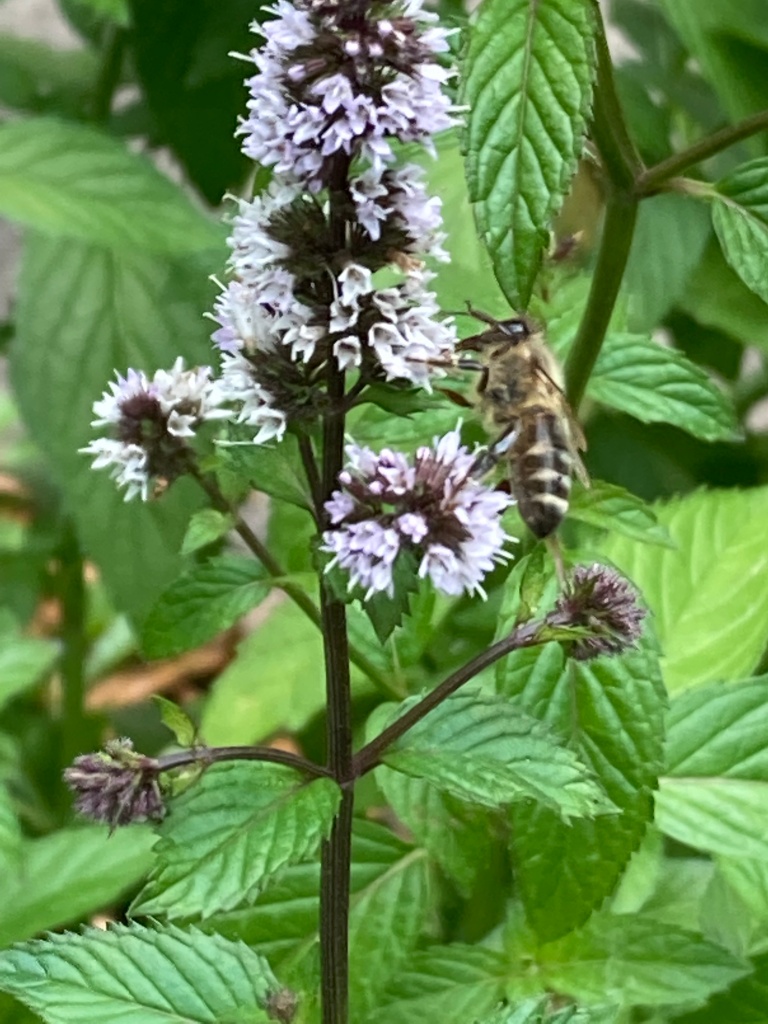
In our own yard, the bees have been loving the mint I planted in a pot last year. Wonder if any of our honey will taste minty?
Because we have so little sun in our yard, we belong to a CSA, and I needed to turn my attention toward that to try to catch up on our vegetable and fruit shares. On the drive to the farm, I pass this barn and was finally able to take a photo.
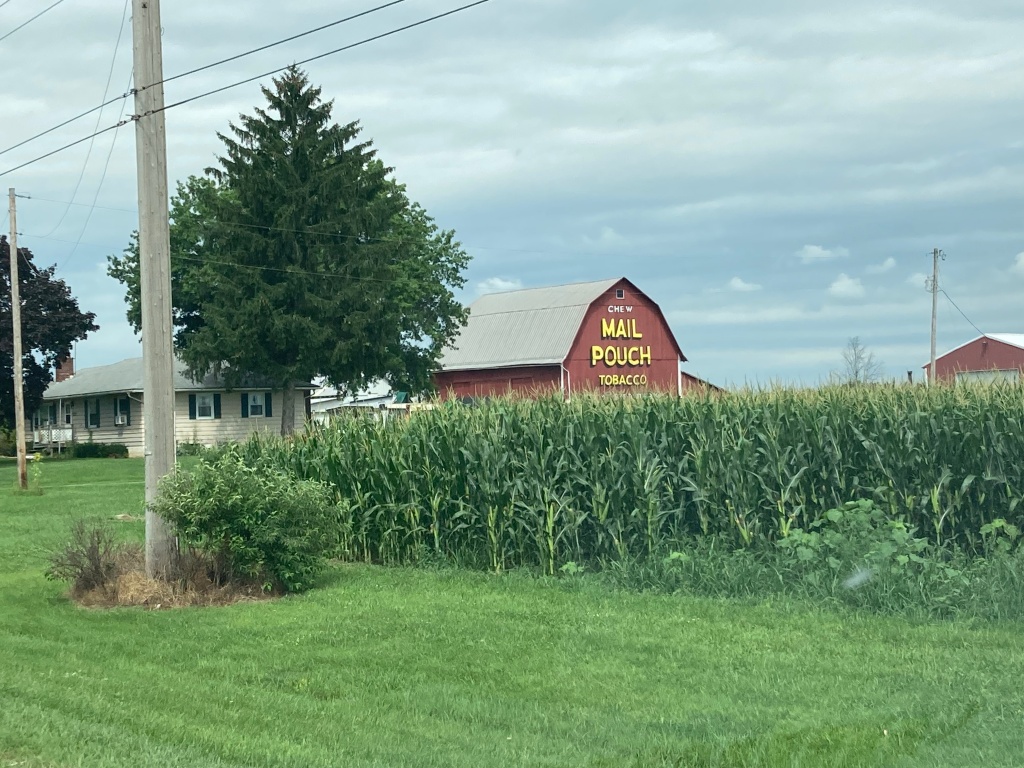
That trip to the CSA farm, along with friends’ “donations” of zucchini, resulted in many jars of hot pepper jelly and zucchini salsa.
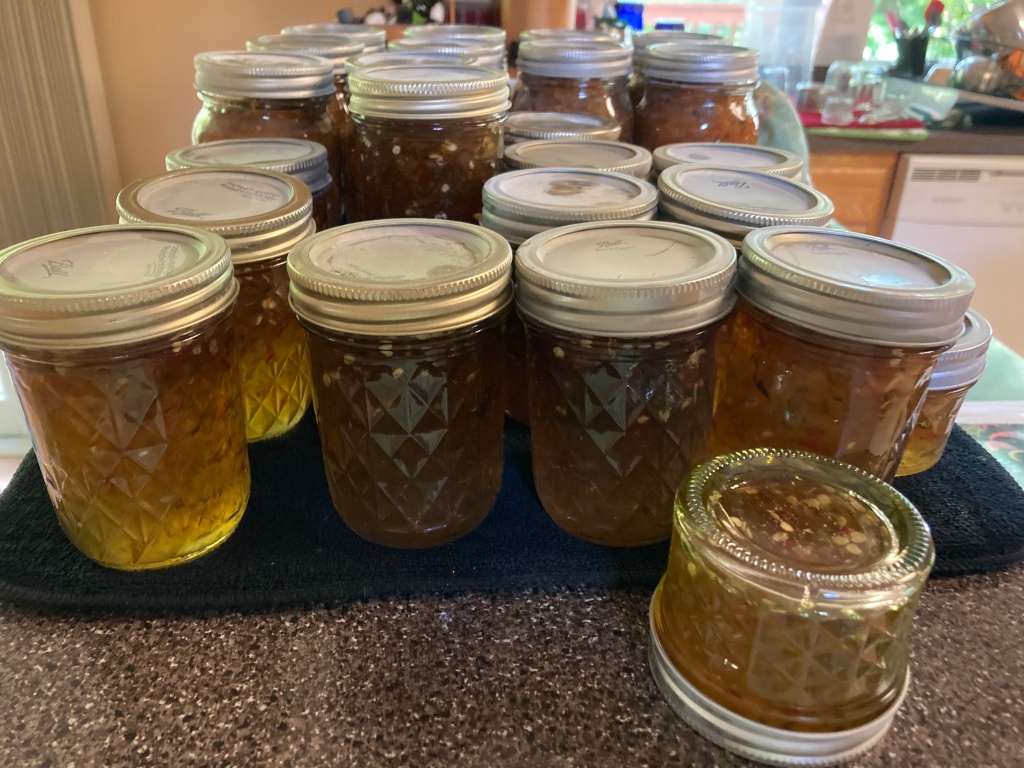

Making and canning anything is a little time-consuming, but the results are worth it. In fact, I hope to can some tomatoes this year. I’m still behind on my CSA share and hoping they can provide me with enough tomatoes to get some in jars.
We managed to get in a quick flight to a local airport for breakfast and a wash of the plane (filthy from Oshkosh), and then were off again, this time for four nights camping.



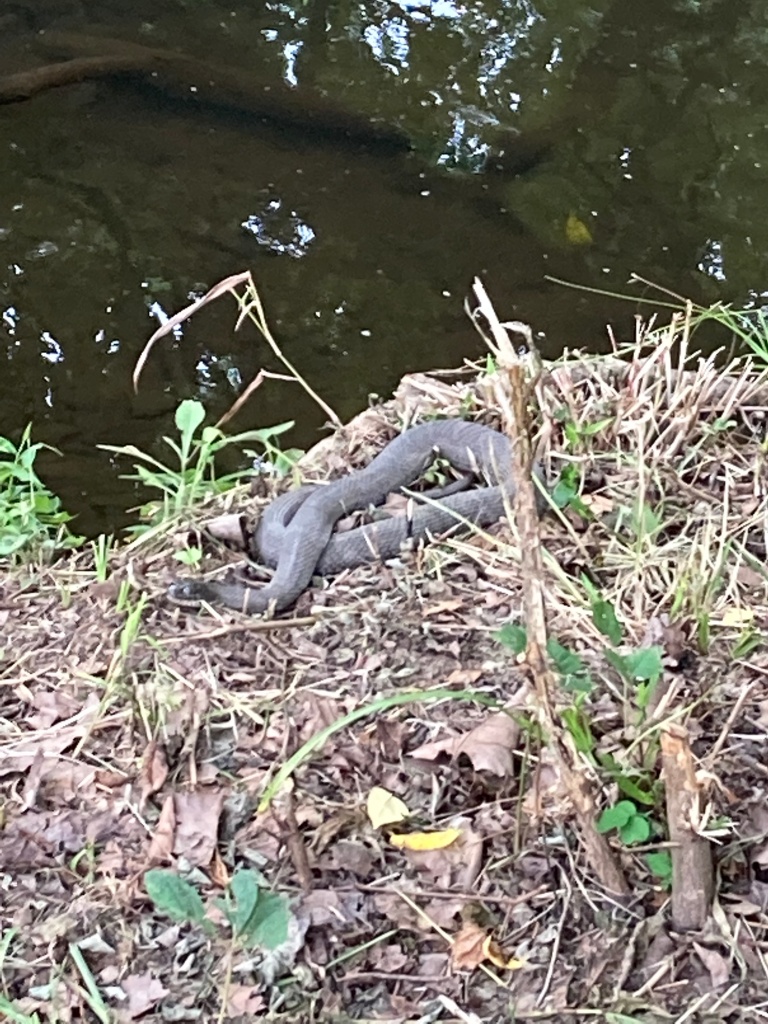
We shared our campsite with this creature, whom we saw every day. It’s a Common Watersnake, and apparently can give a nasty, although not poisonous bite. Fortunately, the breed only does this if a person does something stupid like swing them around by the tail. As it was, we kept an eye on it from a respectful distance, and s/he mostly laid in the sun.
These days, most people camp in large RVs, but we saw a few other tent campers and some small trailers.
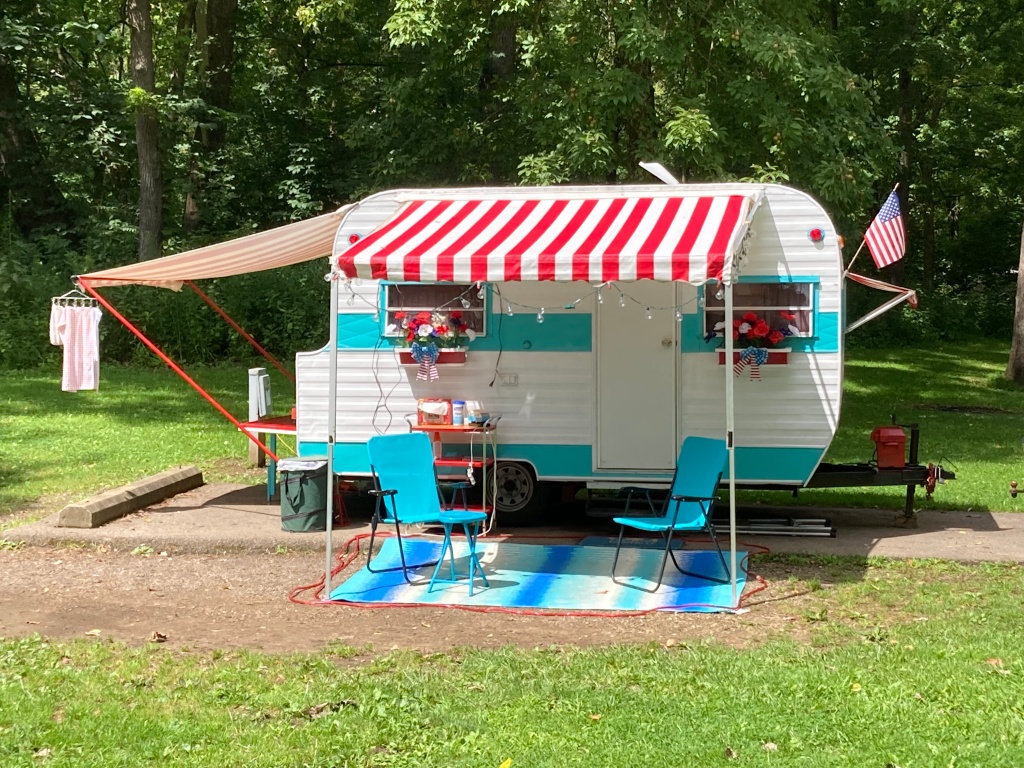
I loved this vintage one, which reminded me of the kind of trailer that was common when I camped as a child with my family.
On our first full day, we hiked to where we hoped to put in our kayak the following day, a distance that was supposed to be two miles each way. It turned out to be closer to four, but was a nice escape from a campground that is always crowded due to its proximity to the water.
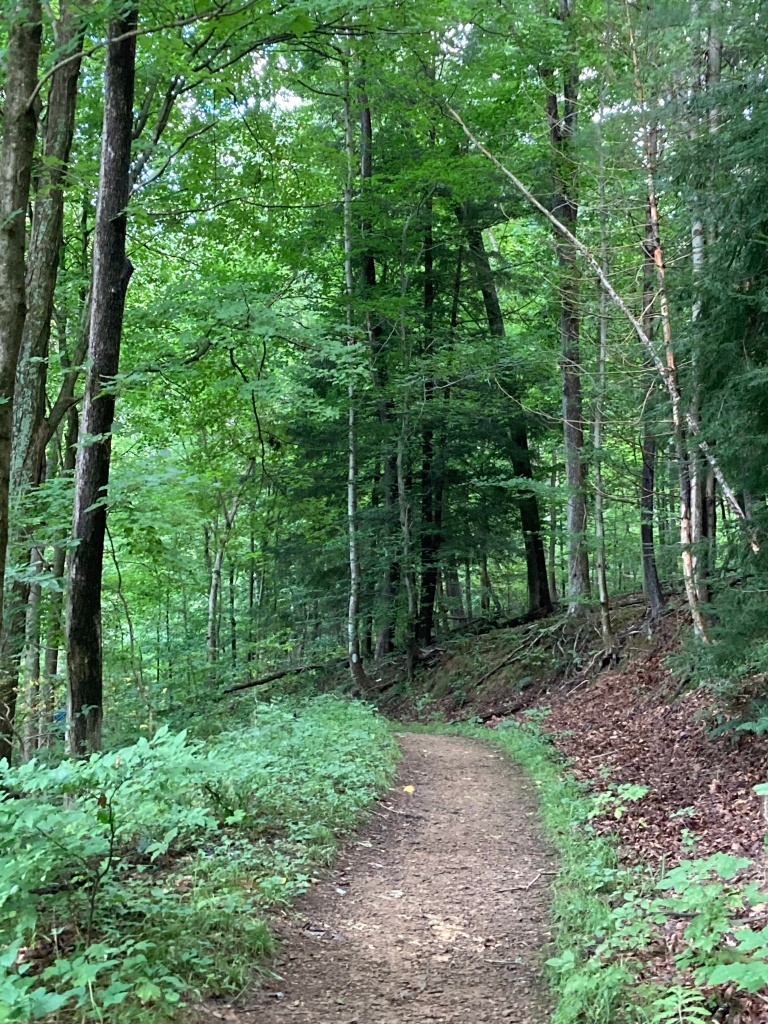
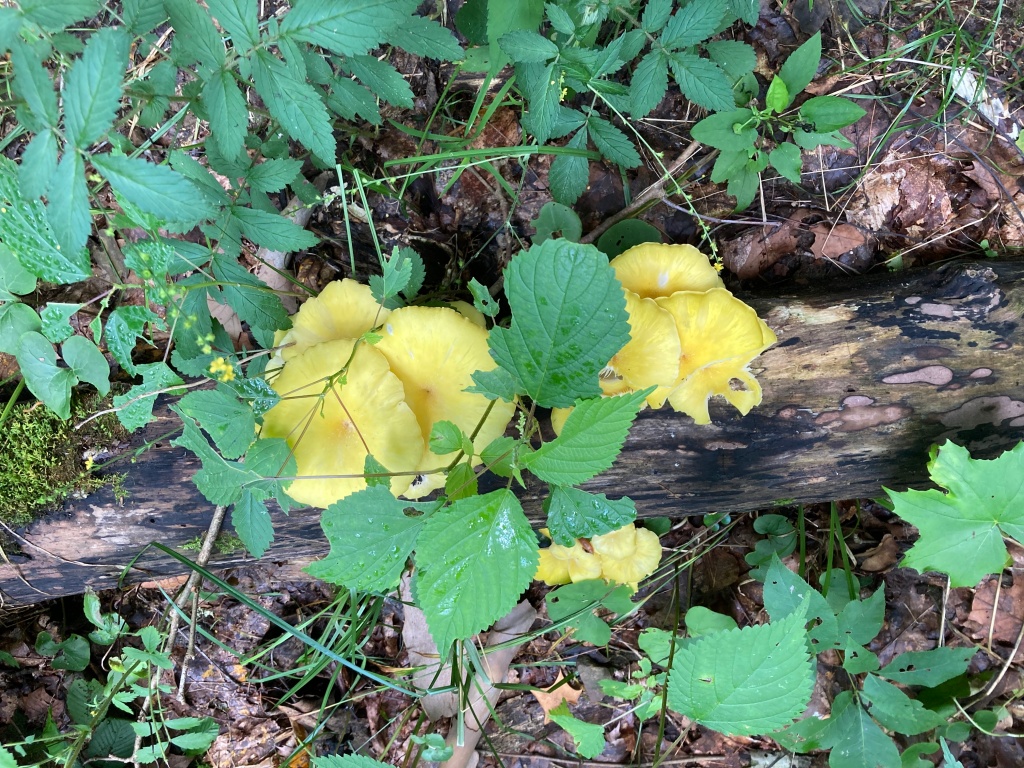
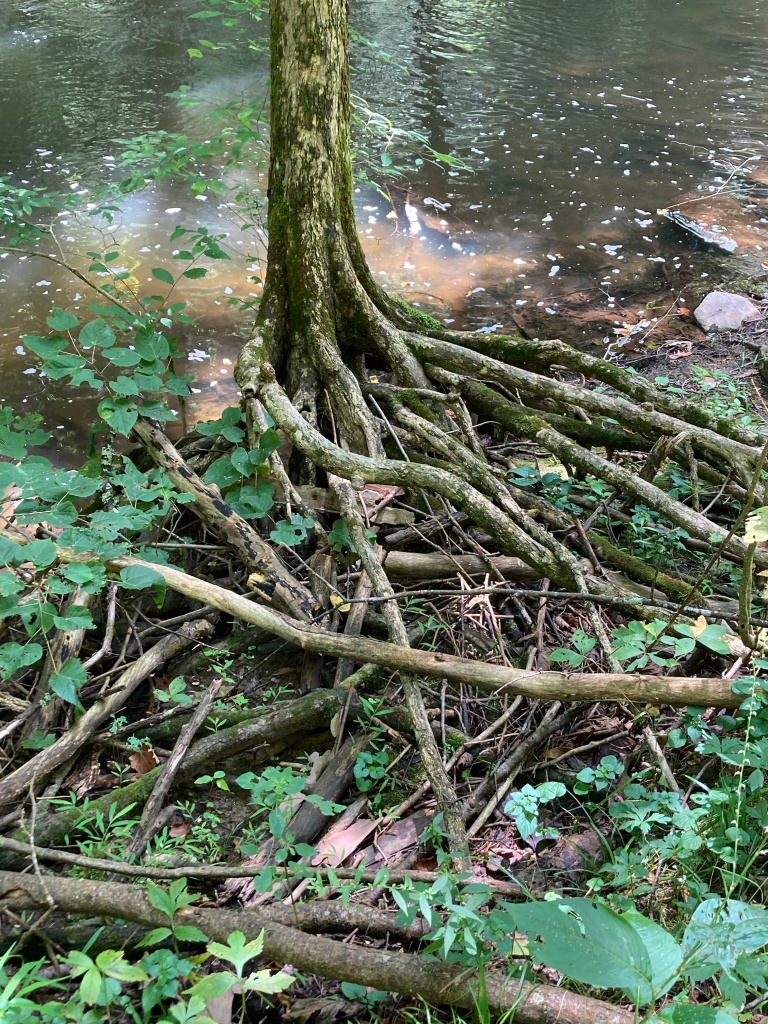

There were many fallen trees, some of them across the path, so it made for an interesting hike.
Also, we crossed a swinging bridge.
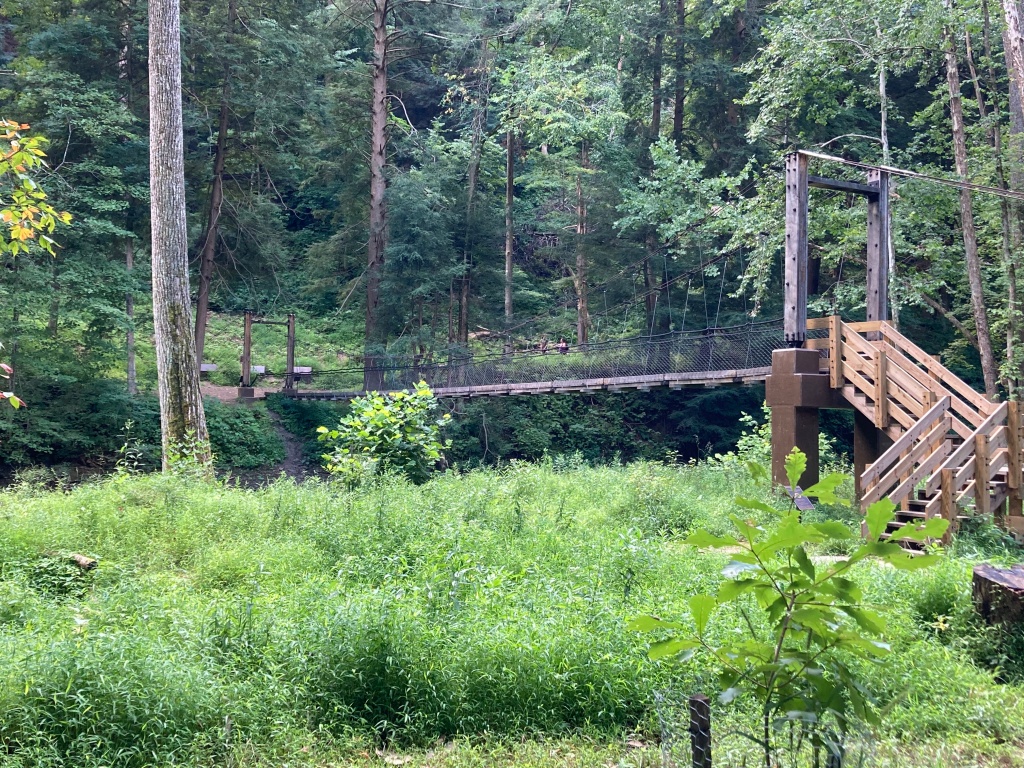
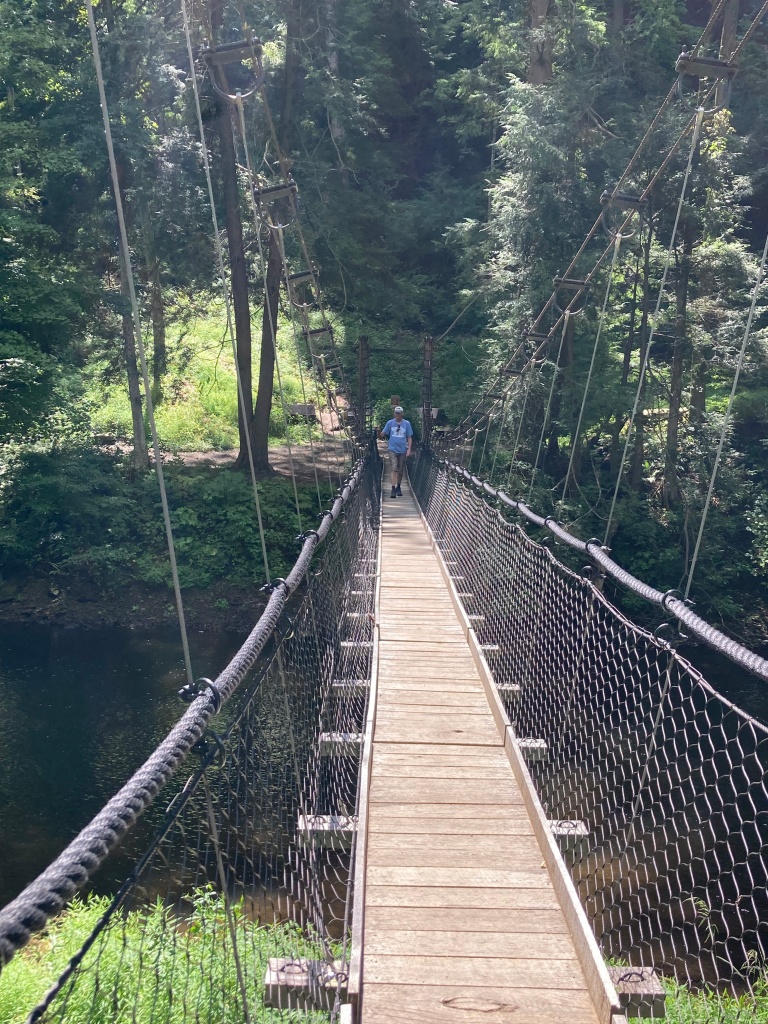
I was quite proud of myself because I don’t like bridges or heights. Plus, at the end of the day, my FitBit said I had walked over 20,000 steps for a total of more than eleven miles!
The following day, we drove to the put-in spot, kayaked back to camp, and then did the same hike again, only going one way this time to pick up our vehicle.
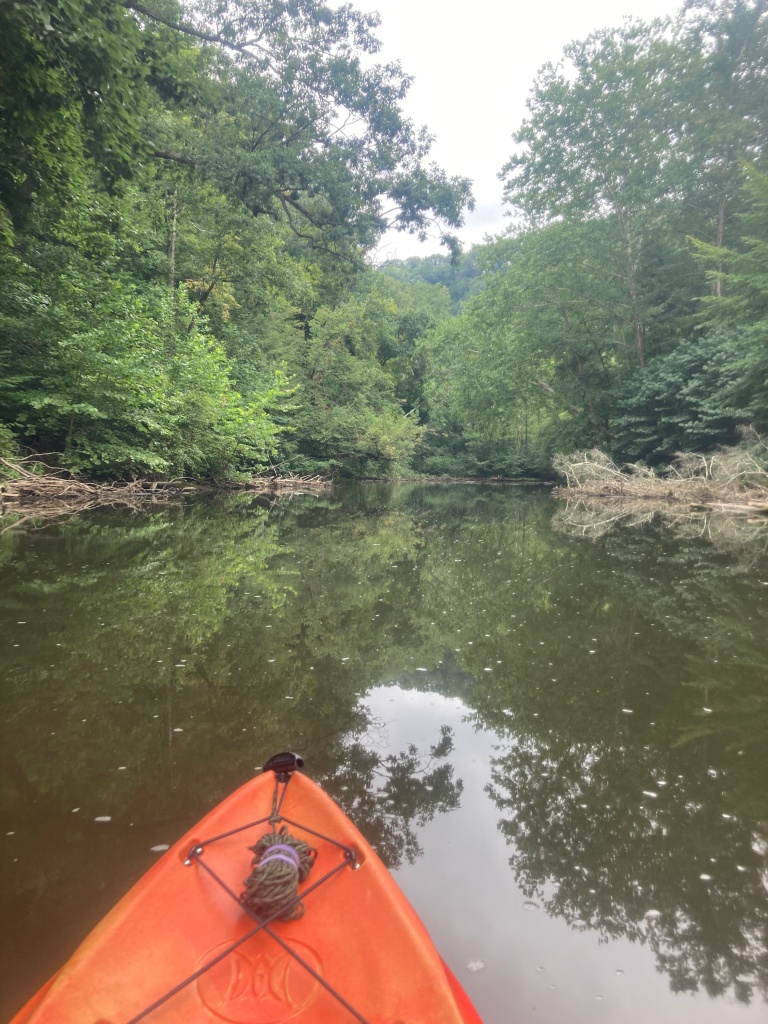

The scenery was beautiful from the river, but I’d be lying if I said it was a wonderful kayak trip. The water level was low, and we had to walk over slippery rocks more times than I can count. If we do that river again, it will be earlier in the season when the level might be higher.
On our third day, we drove to the Kokosing Gap trail, a bike path we hadn’t previously ridden. We only cycled about eleven miles — from Howard to Gambier and up into the town of Gambier and back — but plan to visit again, if only to dine at the “Howard Hilton.”
Howard is a very small crossroads town, and we were quite taken with this little bar calling itself the Hilton.
I look forward to further exploring the trail.


And this train is parked at Gambier. You’re allowed to ring its bell, so I did. 🙂

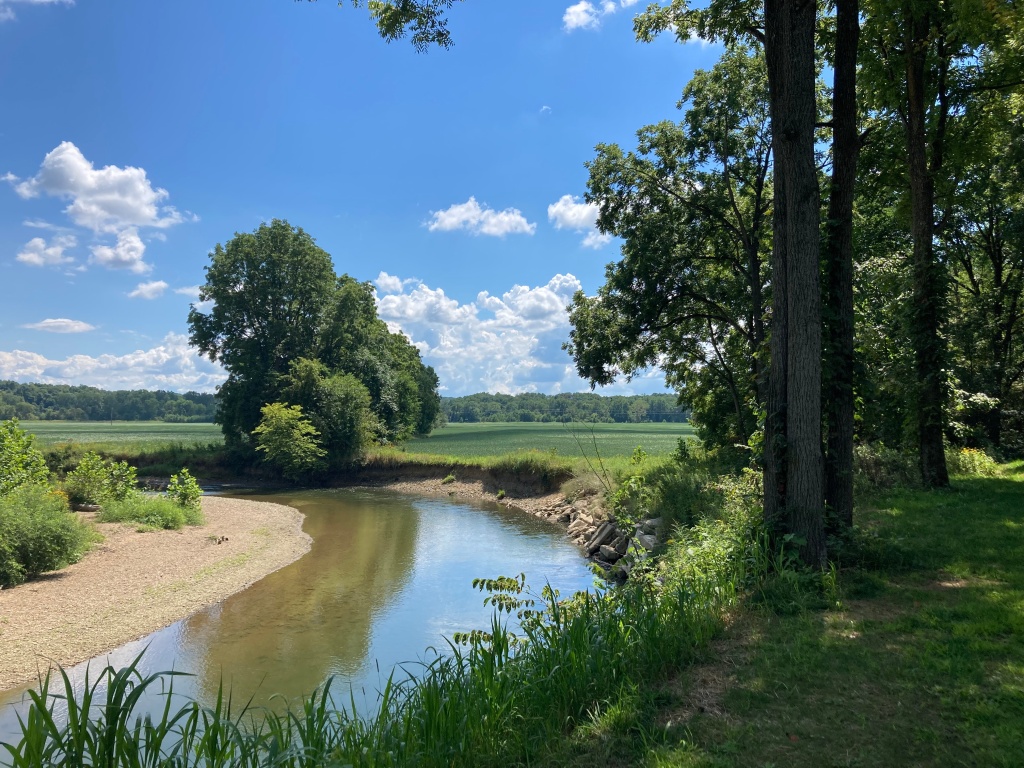
As you can imagine, we had to eat heartily to provide energy for all this physical activity, and most of my cooking turned out well, like this chile and pie iron cornbread dinner.

On the other hand, my second attempt at Dutch Oven pizza turned out rather charred.
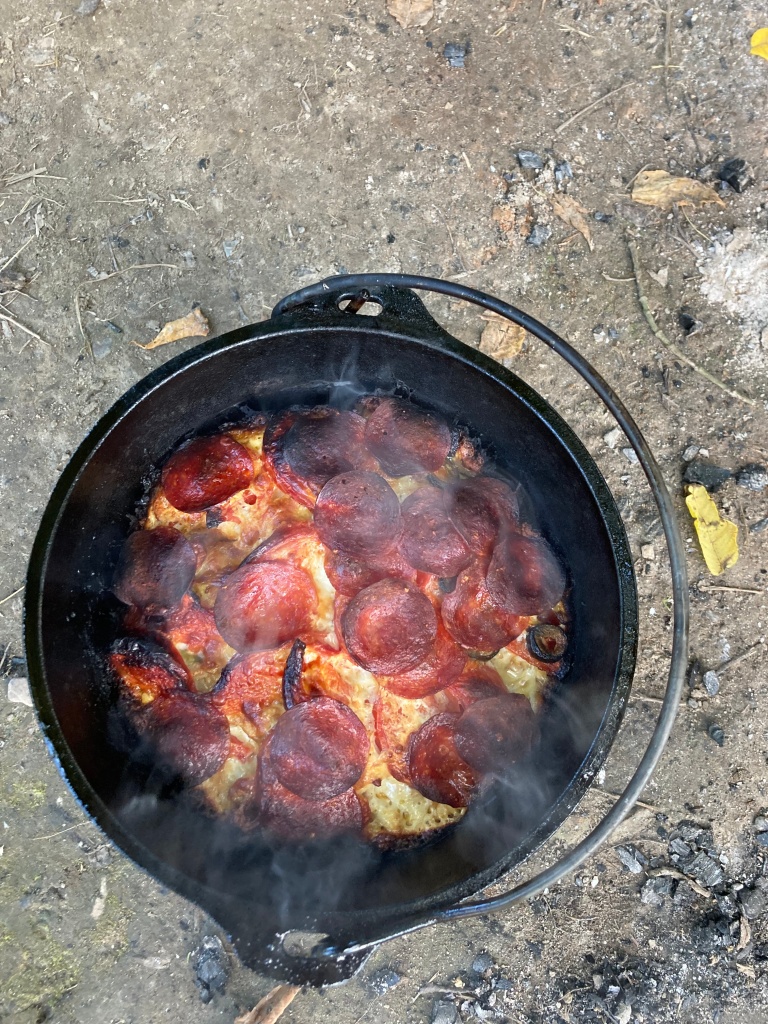
Fortunately the crust was thick, and there were lots of toppings, so we kind of ate the middle. Lest you think poorly of my camp cooking abilities, the first time I made this, it was perfect.
If you’re into camping and cooking, below is the menu for our trip.
Sun — Ham and cheese baguette (Cut a baguette in half, butter one side, mustard on the other, add ham and cheese, wrap in foil, and grill over fire until done), Grilled zucchini marinated in Garlic Expressions, topped with romano and grilled until cheese melts.
Mon — Breakfast: Tomato scrambled eggs (canned tomatoes cooked in buttered pan until liquid is released and thickens into a sauce, add eggs beaten for scrambling, cook gently until done, add chopped cilantro), Lunch: Sandwiches/veggies/munchies, Dinner: Cornbread and chile — beans, peppers, chorizo, chile powder, 1/2 can black beans, canned tomatoes, cumin — Dutch Oven on stove, Cornbread in pie iron (butter pie iron very well, drop 4 T. cornbread dough, close iron and stick in coals, flipping after five minutes and checking after ten).
Tues — Breakfast: Ham and eggs, with home fries, on tortilla if desired, Lunch: sandwiches/veggies/munchies, Dinner: Camp quesadillas — tortillas, chorizo (fry ahead), salsa, guac, olives, beans, cheese, done in pie iron, toppings: guacamole, salsa.
Weds — Breakfast: Cereal, milk, Lunch: Sandwiches/veggies/munchies, Dinner: Pizza — pizza crust (make ahead), sausage (fry ahead), onions, peppers, olives, cheese, basil, pepperoni, fresh tomatoes, garlic.
Thurs — Breakfast: snack bars, bananas, melon.
It was a great trip from the misty mornings …

… to the beautiful sunsets.

Sounds like you had a great summer! Always enjoy your updates! 🙂
LikeLiked by 1 person
Thanks, Betsy. We are definitely lucky to be able to be living our best life right now. At our ages, who knows how long we can continue to do so?
LikeLike
Sorry, that sounded kind of negative. I didn’t mean it that way, merely that no one knows how many years we have and how many will be healthy.
LikeLike
I’d have come along for the food alone! Love that first photo, btw, where the plane’s wingtip is just piercing the setting sun. Great capture.
LikeLiked by 1 person
Thanks, Kate. They always have such beautiful sunsets, it’s easy to get a good shot!
LikeLiked by 1 person